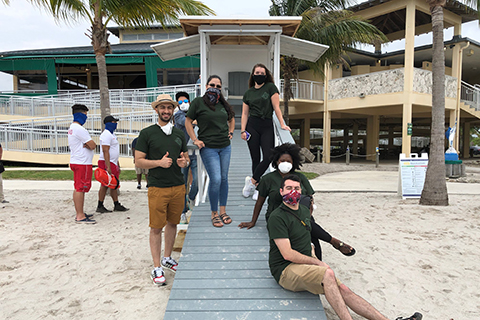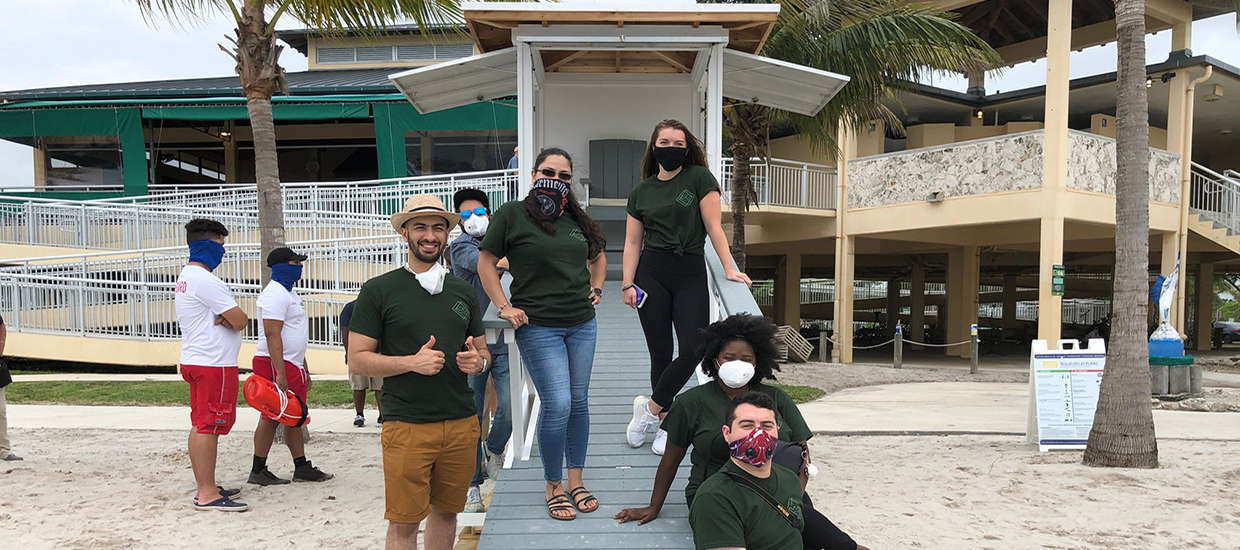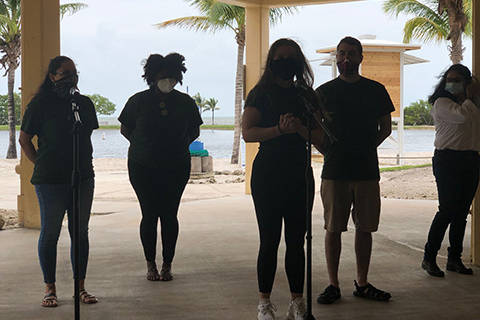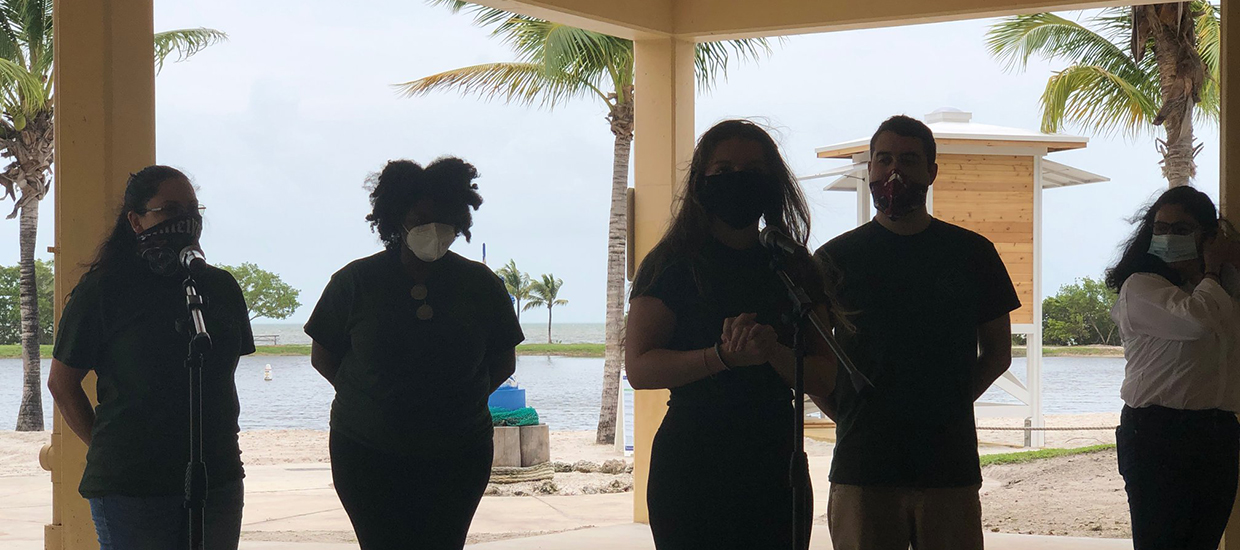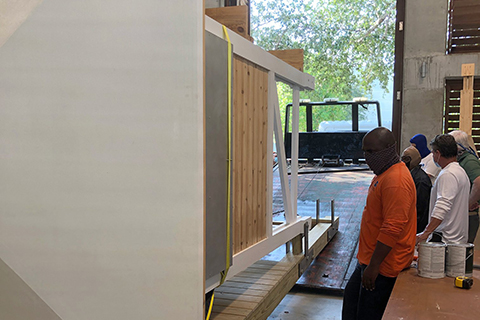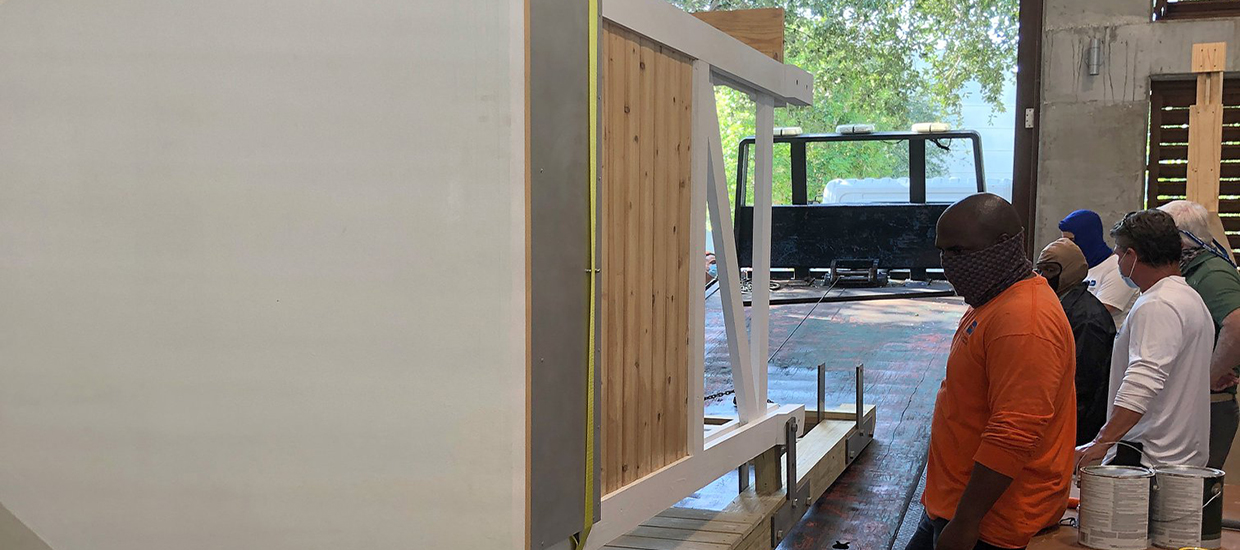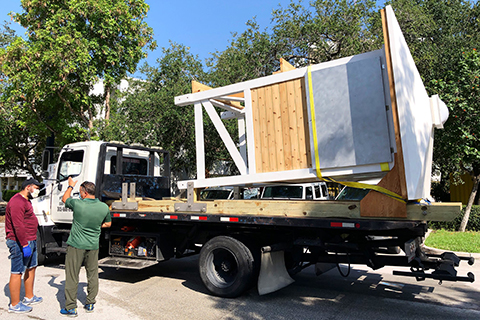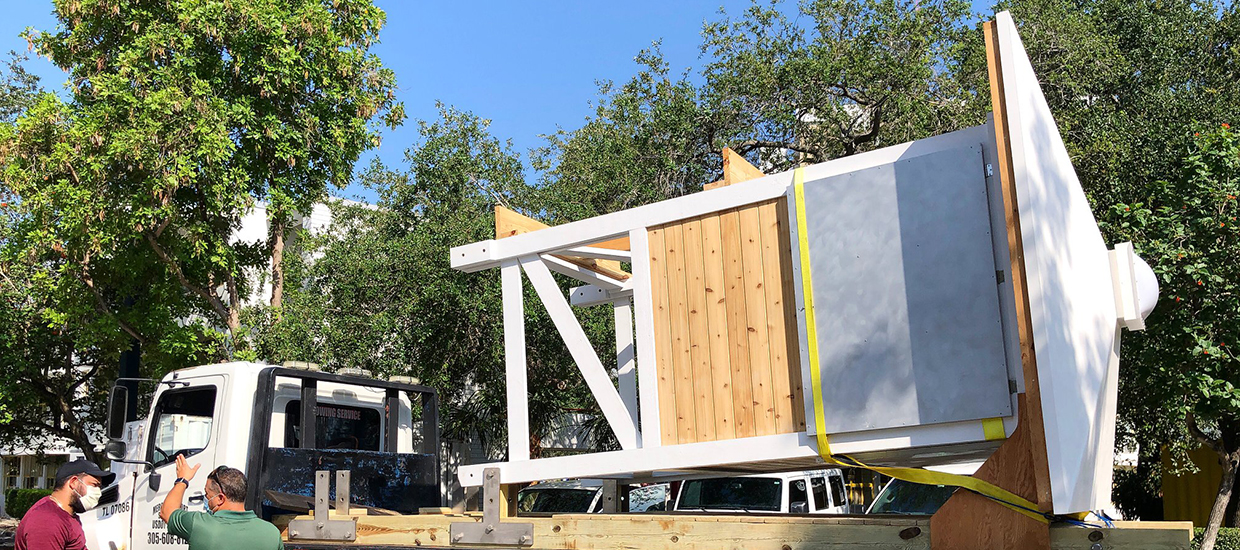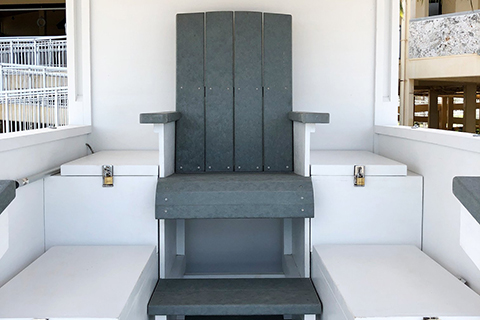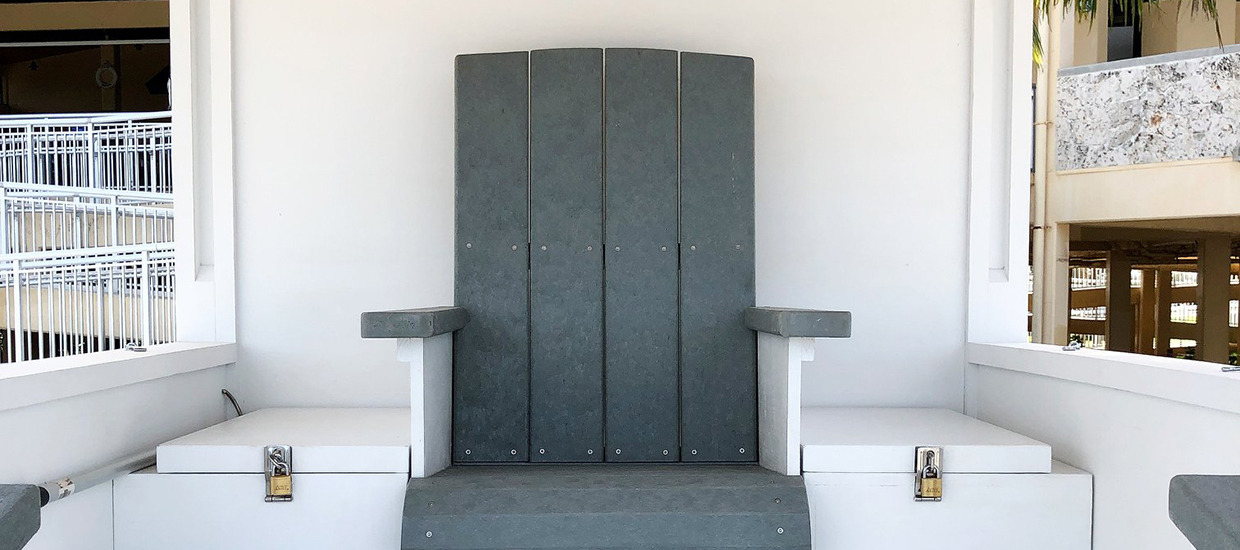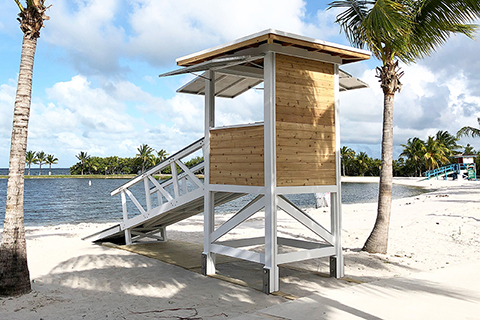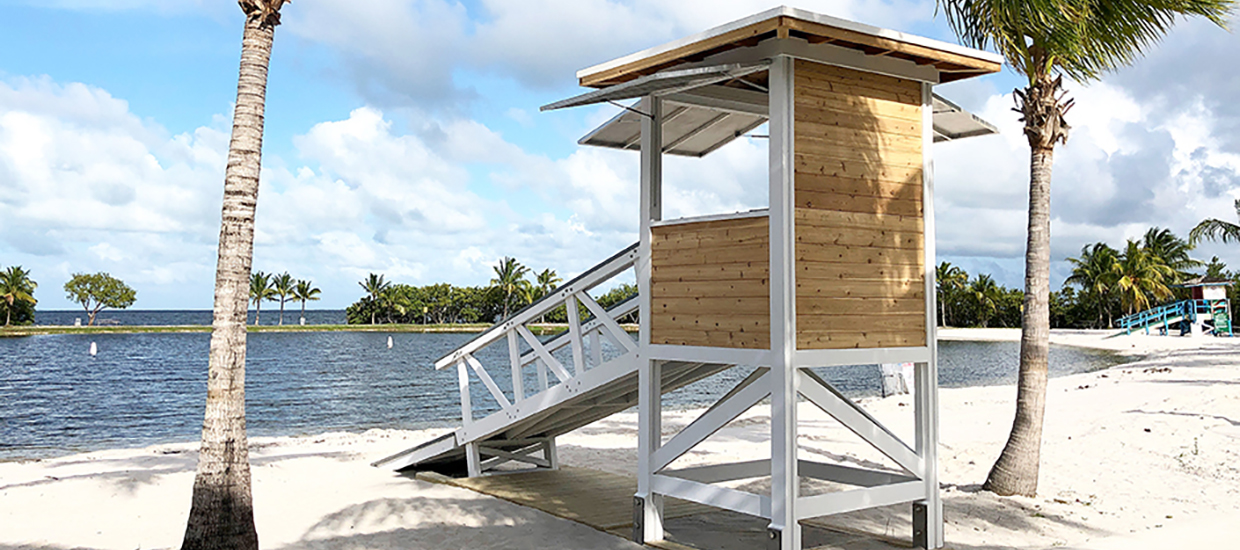A familiar structure containing an elevated, covered, perch with an attached ramp, turned out to be much more complex in its form, detailing and material choices. Through interviews with the lifeguards, students came to realize how every detail of the lifeguard station was essential to the lifeguard’s need for unobstructed vision and speed and efficiency in the job of protecting the public and sometimes saving lives.
After the interviews and careful evaluation of the site and existing structures, students collectively created a series of drawings and models to arrive by consensus at the final design. Mocking up chairs, ramps, and careful evaluation of materials and details led to a presentation that impressed the clients with its durability, was within budget, and solved many of the existing problems.
The solution, first and foremost, is designed to function well for the lifeguards using it. Unobstructed sight-lines, all-day shade, protection from the wind and rain, ample lockable storage for equipment and fast access to the beach and water via the ramp are all in the forefront of the design. Materials were selected for durability and long use in a marine environment. All fasteners are ‘316’ Stainless Steel. The decking, chair, and hand rails for the ramp are made of recycled plastic called ‘SelectForce Plastic Lumber’ from Bedford Technologies. This material, which comes with a 50-year warranty, will outlast any conventional pressure-treated lumber resisting structural damage due to termites or fungal decay, and will not check or splinter. The tower frame is made of kiln-dried pressure-treated lumber that allowed us to assemble and paint the frame during construction. All cuts in the wood were primed and painted with three coats of paint. The bypass, braced construction of the tower is heavy and strong. Designed to eliminate the need for intermittent supports, the ramp is designed and constructed to act as a truss with a width sized for lifeguards to carry equipment boxes down the ramp unobstructed.
The roof and exterior tongue and groove walls are made of Western Red Cedar (WRC) that is resistant to insect damage and weathers well in a harsh marine environment. The seamless roof covering consists of polyester fabric embedded with multiple layers of liquid rubber that dries to a thick membrane, integrally bonded to the ¾” marine grade plywood substrate over the tongue and groove WRC sheathing. This roof forms a continuous smooth surface impervious to rain and wind uplift loads. Additionally, the high reflectance value of the white roof minimizes heat gain while the vented peak encourages air flow through the tower. The skylight provides natural light without harmful UV rays.
Finally, the gas shock-supported aluminum panels solve one major problem for the lifeguards, that is the ability to secure the tower at days end and adjust to the changing environmental conditions of wind, rain and sun. The plywood panels of the existing structures were too dangerous to open and close because of their weight and thus always remained propped open. The new gas shock-supported aluminum panels spring open on their own and can be closed and locked from the inside so the whole tower can be secured at the end of the day. The four lockable interior storage boxes are designed and detailed to store equipment and keep the contents dry. The box openings feature an upturned lip as seen in boat hatches to resist wind driven water. Finally, the chair and lower ramp are designed to be adjustable to the changing conditions caused by beach erosion ensuring that as land levels recede, the lifeguards can maintain comfortable and safe access to the beach.
In addition to the need for deliberation and care in choice of materials and detailing, the tower’s height challenged the studio. Given that the overall height of the tower would be 14’ from base to top of tower, the structure needed to be designed to be collapsible in order for it to be transported to the site. The maximum height for roadway transport is 13’-6”. Even on a low trailer the tower could not have been transported in the upright position. Because of this, the tower needed to be designed to be pinned and rotated to a horizontal position both in the Build/Lab and then on site. This created an extra set of design parameters that called for designing a longer skid foundation, choosing the correct size truck for transport, on-site maneuvering capabilities and the construction of a temporary gin pole brace to lower and raise the tower.
Today the new Lifeguard Station has already become a local landmark in Miami-Dade County’s extensive park system, the third largest in the country. Centered on the atoll pool, the Lifeguard Station marks the southeastern end of the County park system in one of its most important Heritage Parks. Built in the 1930s, Homestead Bayfront Park contains a large coastal mangrove hammock, marina, Atoll pool and now the new Lifeguard Station. Serving the City of Homestead and the agricultural community of Redland the Atoll pool is one of the most popular and heavily used elements of the park in one of highest used parks in the system. Serving as an integral part of the County’s Greenway and Blueway system that links two National Parks: Everglades National Park and Biscayne National Park to the County parks, Homestead Bayfront Park points to the future. The Lifeguard Station marks the terminus of a long east-west path in a large, unique sub-tropical park system reminding us that small things, designed with users in mind and built to last, can change lives - just ask the lifeguards.
Client: Miami-Dade County Parks, Recreation and Open Spaces
Students: Baraa Ageel, Bernute Augustin, Tiffani Banks, Laura Beltran, Andrew Bissell, Michael Burke, A.J. Guillen, Regyne Heurtelou, Morgan O’Brien, Shannar O’Connor, Dylan Rzepka, Olivia Schilling
Faculty: Jim Adamson, Rocco Ceo



